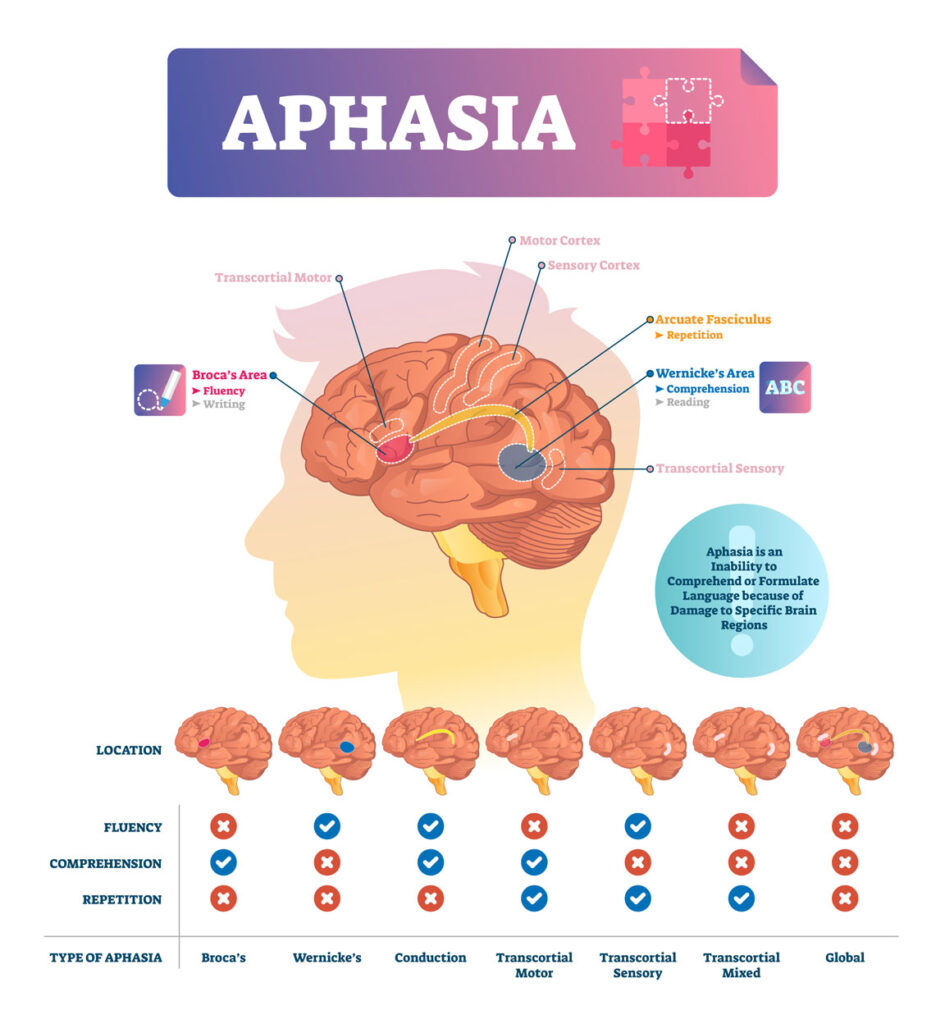In the US, around 2 million people struggle with the health condition known as aphasia, a disorder that impacts brain function. As June is National Aphasia Awareness Month, this article will provide information on this brain disorder and ways to help mitigate its symptoms.
What Is Aphasia?
Aphasia is a disorder that results from damage to portions of the brain that are responsible for language. For most people, these areas are on the left side of the brain. Aphasia usually occurs suddenly, often following a stroke or head injury, but it may also develop slowly, as the result of a brain tumor or a progressive neurological disease. The disorder impairs the expression and understanding of language as well as reading and writing. Aphasia may co-occur with speech disorders, such as dysarthria or apraxia of speech, which also result from brain damage.
–National Institute on Deafness and Other Communication Disorders (NIDCD)

What Causes Aphasia?
Aphasia is caused by damage to one or more of the language areas of the brain. Most often, the cause of the brain injury is a stroke. A stroke occurs when a blood clot or a leaking or burst vessel cuts off blood flow to part of the brain. Brain cells die when they do not receive their normal supply of blood, which carries oxygen and important nutrients. Other causes of brain injury are severe blows to the head, brain tumors, gunshot wounds, brain infections, and progressive neurological disorders, such as Alzheimer’s disease.


Supporting Loved Ones Who Have Aphasia
Family involvement is often a crucial component of aphasia treatment because it enables family members to learn the best way to communicate with their loved one.
Family members are encouraged to:
- Participate in therapy sessions, if possible.
- Simplify language by using short, uncomplicated sentences.
- Repeat the content words or write down key words to clarify meaning as needed.
- Maintain a natural conversational manner appropriate for an adult.
- Minimize distractions, such as a loud radio or TV, whenever possible.
- Include the person with aphasia in conversations.
- Ask for and value the opinion of the person with aphasia, especially regarding family matters.
- Encourage any type of communication, whether it is speech, gesture, pointing, or drawing.
- Avoid correcting the person’s speech.
- Allow the person plenty of time to talk.
- Help the person become involved outside the home. Seek out support groups, such as stroke clubs.
Learn More On Helping Those With Aphasia
To learn more about aphasia and additional ways to help those diagnosed with it, the NIDCD’s Directory of Organizations is a great place to start.
